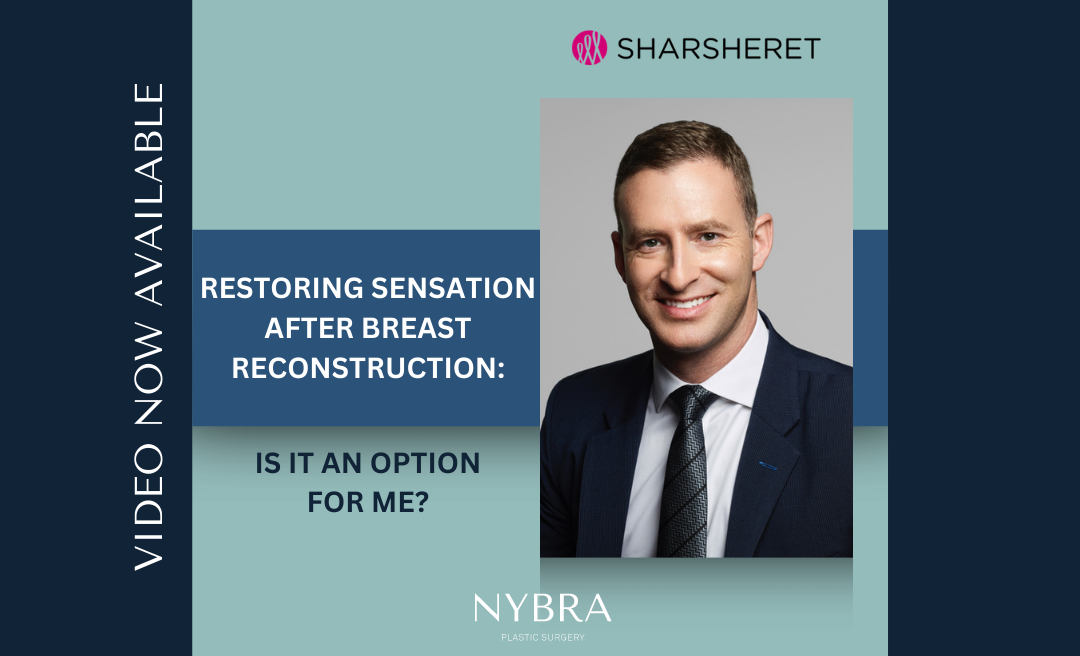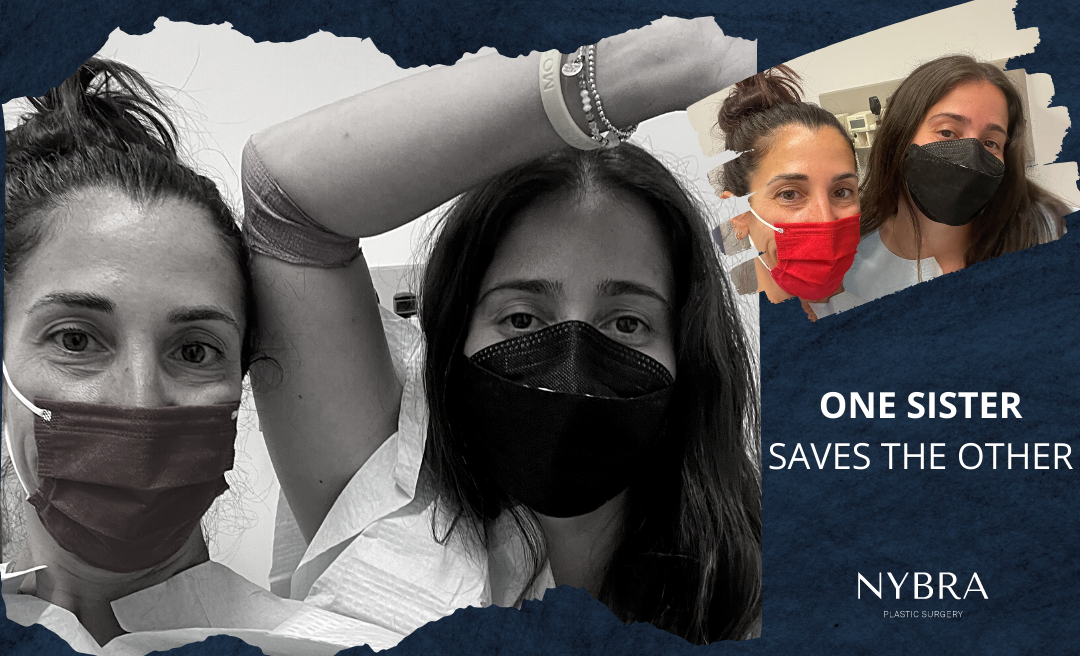Dr. Jonathan Bank Joins Sharsheret for a Conversation on Resensation
December 21, 2022
Last month, Dr. Jonathan Bank joined Sharsheret for a conversation on nerve preservation and reconstruction during and after breast and chest surgery. Sharsheret is a non for profit organization that supports women and families facing hereditary breast and ovarian cancer. During the lecture, Dr. Bank discussed the significance of nerve reconstruction both as a way to promote sensation and as a way to prevent or reduce long-term pain. See below for a few highlights from the talk, or watch the whole lecture, here.
There are multiple nerves that provide breast and chest sensation.
Dr. Bank went over the basic nerve anatomy of the breast, chest, and armpit area.
“Think of them as emerging through the interspaces between the ribs. They wrap around almost like a belt for that part of the body, and they look almost like thin wet spaghetti,” he said.
The nerves that extend towards the arms tend to be most at risk during procedures like lymph node dissection. Those that are located throughout the breast are vulnerable during mastectomy.
“These nerves that run to the breast skin and the nipple areola complex are at risk of being injured during a mastectomy and that’’s a discussion that needs to take place before somebody is going into having this procedure done.”
Breast sensation after mastectomy can have long-term physical and emotional consequences.
“It’’s beyond just the anecdotal ‘somebody got burned because they didn’’t feel the breast skin.’ There are many, many other components—physical and emotional—that have really become a true interest of mine, and a focus in my practice,” Dr. Bank said.
The presence of absence of sensation after surgery has a profound, documented impact on patient physical and emotional wellbeing. It affects how patients feel within their bodies and whether they feel that their chest area is truly part of them, regardless of whether they undergo breast reconstruction.
Nerves that are not reconstructed often cause pain.
“Nerves want to sprout back. They’re like electric cables that want to grow back and submit signals to and from the brain.”
Dr. Bank explained that simply cutting them without any type of reconstruction is akin to leaving live wires within the body. In many cases, neglecting nerve care and reconstruction during surgery does more than reduce sensation in the area. It causes chronic pain after mastectomy.
“Many women complain of these electrical shooting pains. It’s a very common complaint in these very reproducible locations: in the armpit area, in the outer part of the chest, and sometimes in the inner part of the chest.”
Post Mastectomy Pain Syndrome (PMPS) is a well-documented issue.
“There have been a few studies from across the globe that all have consistent results. There are studies from Denmark, China, Brazil, and a recent one from University of Michigan talking about post-mastectomy pain.”
Based on these studies, PMPS can occur in up to 20 to 50 percent of women. Up to 10 percent of sufferers may be classified as severe, meaning that they require chronic pain medications or other interventions. Despite the condition’s name, pain is not unique to mastectomy patients. It can occur after any type or breast or chest surgery in which nerves are affected.
“This is something that we can actually do something about, and the extent of the problem is not something to be overlooked.”
There are solutions for patients dealing with PMPS.
While prevention in the form of proper nerve handling and reconstruction during mastectomy, breast reconstruction, or other chest surgery is the best option, patients dealing with PMPS can still find avenues for relief. Dr. Bank works with an interdisciplinary team to treat this issue through physical therapy, oral and local pain management, and—in some instances—surgery. There is typically some way to improve symptoms, as exemplified by Dr. Bank’s patient, Jen, who he featured during the lecture. You can read more about her story here.
Nerves take time to grow back.
Women who do undergo nerve reconstruction are advised to have patience, as growth takes time, and return of sensation evolves. Dr. Bank shared a video of a patient undergoing a sensation assessment a few months after natural tissue reconstruction. At that point, she still lacked sensation in the central portion of her reconstructed nipple. Later, about a year after her procedure, another video captured renewed sensation in that area.
In another case, Dr. Bank said he connected only one nerve on the outer portion of a patient’s chest. Later, she found that she had renewed medial sensation, suggesting that connecting that one nerve fostered nerve growth throughout the breast.
The medical community is starting to acknowledge PMPS more readily.
“It’s wonderful to see when you go to the various conferences and more and more people are talking about this. More people are practicing it. I think a lot of it was driven by popular media and even more by women in the community that advocate for a change.”
Dr. Bank gestured at news articles and papers within journals as evidence of a shift within the medical world.
“I think conversations like this one continue to raise awareness and basically force us professionals to continue to push the needle to do best.”
Dr. Bank hopes that the medical community will come to realize that while nerve reconstruction does not guarantee sensation, its potential for good should not be understated. According to Dr. Bank, resensation procedures do not add any significant amount of time to surgeries, making the downside to their performance truly minimal. This added step can reduce pain and improve sensation, fostering higher satisfaction, assuaging emotional concerns, and improving quality of life.
“Improvement is so statistically significant there’s almost no reason not to do it.”
*Quotes are edited for length and clarity.
One Sister Saves Another’s Life—With the Help of Genetic Testing
Genetic predispositions to cancer often mean that families deal with multiple diagnoses in multiple people over an extended period of time. The Brickman Family is…
